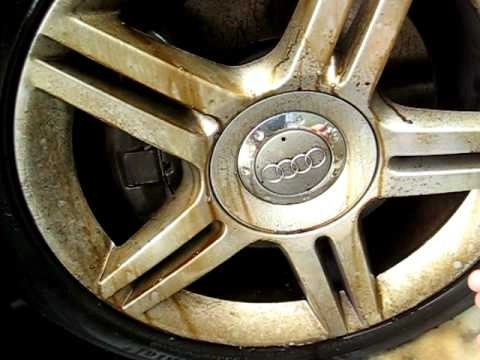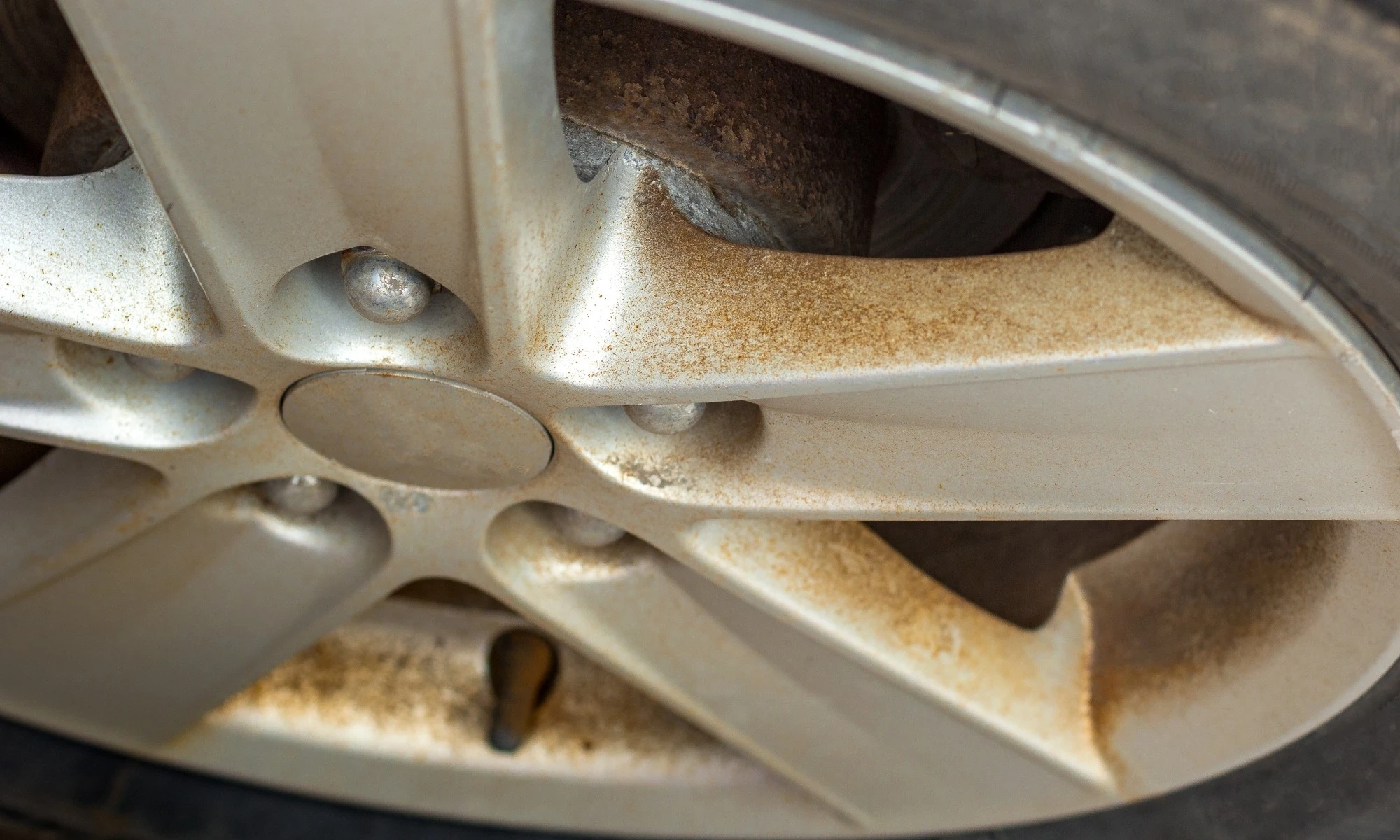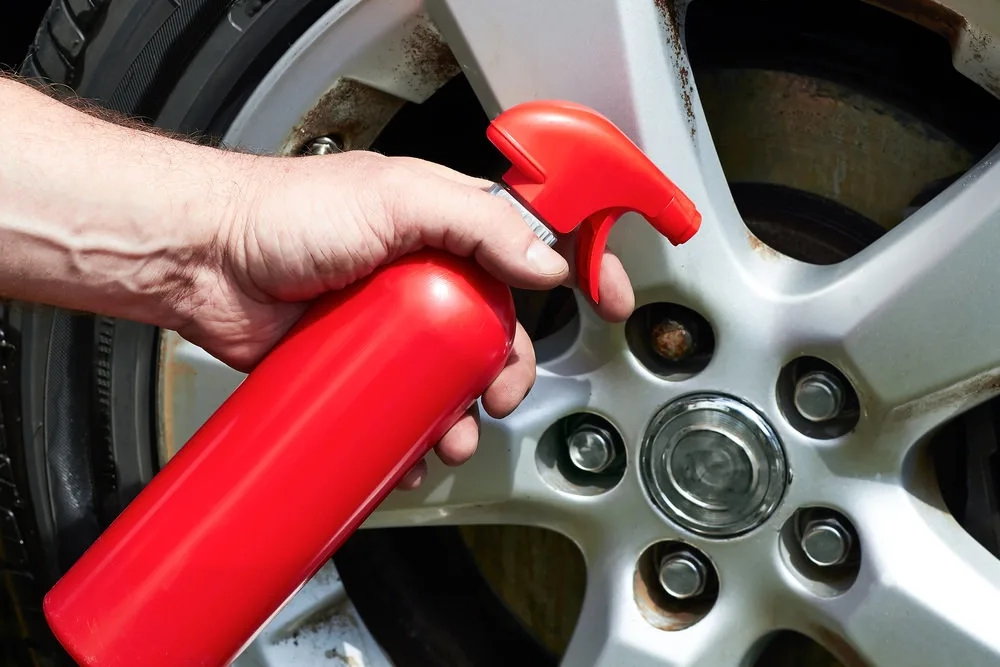Mercedes Brake Dust Problem - How to Remove Brake Dust from the Inside Wheel and Between Wheel Nuts
Are you familiar with the black gunk that amasses on your Mercedes wheels? That is, indeed, brake dust. It is a persistent, naturally occurring occurrence. But with a few useful pointers, you can minimize brake dust and enhance the appearance of an otherwise spotless automobile.
Mercedes' brake pads are torn off by metal debris when the brakes are engaged to stop the vehicle. Although brake pad dust is typical, excessive quantities might indicate a possible issue. Large levels of brake dust can cause vibration, a reduced lifespan for the brake pad, and poor braking performance if it builds up around the brakes and wheels.
The Table of Contents
- Mercedes Brake Dust: What Is It?
- Why Is Brake Dust Produced in Mercedes Cars?
- Why Is Brake Dust Cleaning Important for Mercedes?
- Factors That Cause Brake Dust on Your Mercedes Wheels
- How Can Brake Dust Be Removed from Mercedes Wheels?
- How Do I Prevent Brake Dust from My Mercedes?
- Final Thoughts
1. Mercedes Brake Dust: What Is It?
Your wheels develop a brown deposit called brake dust. Your wheel seems to be covered with road filth because of a mixture of iron flakes, carbon residue, and friction material.
The brake pad material will determine the hue of this dust.
For instance, Mercedes often have highly black brake dust due to the use of brake pad materials that favor performance and silence. Other brake pad compositions could emit reddish dust and include more metal particles for longer life.
No matter whether your Mercedes has drum brakes or a disc brake arrangement, it's crucial to remember that a buildup of these metallic particles is inevitable.
2. Why Is Brake Dust Produced in Mercedes Cars?
One of two things happens when you step on the brakes:
In a disc brake, your brake shoes press against the brake drum, or your brake pads clamp onto the brake rotor (in drum brakes). The wheels of your Mercedes will halt as a result of the friction produced by these clamping or pushing movements.
The brake dust that results from this friction, however, also accumulates with time.
When it comes to brake dust and filth, disc brakes are the biggest offenders.

Image Source: https://onsitedetail.net/blog/is-brake-dust-bad-for-your-car/
Brake dust accumulates immediately (and obviously) on the wheel as a result of its open design. The black brake dust will be highly noticeable and stand out against the wheel hub if your Mercedes has alloy wheels.
The majority of the brake dust accumulation is contained in the brake drum since drum brakes are enclosed. This implies that you won't have as much of an aesthetic problem. It does, however, imply that you should routinely wipe your drum to remove extra brake dust.
3. Why Is Brake Dust Cleaning Important for Mercedes?
Metallic fibers are frequently present in contemporary brake pads to help decrease friction.
As a result of the brake dust that is produced, several issues might arise with the wheel, the brake caliper or drum, and other neighboring suspension parts.
Here are some reasons why you shouldn't allow brake dust to remain on your wheels for too long:
1. It Could Harm Mercedes Alloy Wheels
Your brake pads are in a position that causes their dust to fall naturally onto your wheels. Tires get stained by the dust. Additionally, the rims catch it.
Even if you can remove the dust, if you take too long, it becomes more difficult. Brake dust may be baked onto metal and alloy rims, where it adheres and hardens. Even if you routinely clean your Mercedes, the surface will still seem stained and soiled. With typical cleaning supplies, the dust will become challenging to remove.
You're dealing with more than simply a surface issue. Abrasive substances, such as minute pieces of metal, are frequently included in brake pad dust. Your rims' surface may become damaged and scratched. If the damage is not repaired, it can get so severe that you will need to have the rims rebuilt or resurfaced.
Additionally, brake dust can erode through an alloy wheel's protective covering, exposing it to corrosion and resulting in long-term harm.
2. It May Impact Braking Effectiveness Negatively
It's normal to have a little brake dust on your wheel.
However, too much brake dust can impede stopping distance and increase brake noise.
Additionally, brake dust accumulation on the brake caliper and brake rotor can create an uneven braking surface that causes vibration and noise. When brake dust becomes caught inside drum brakes, this situation is considerably more common.

Image Source: https://shop.advanceautoparts.com/r/car-projects/how-to-remove-brake-dust-from-wheels
Get a professional to check your braking system if you detect a lot of brake dust or noise on a tire. These signs may point to a more serious problem, such as worn springs in the brake drum or issues with the brake pad and rotor installation.
3. Brake Dust In Excess Can Be Harmful to Human
There are potentially dangerous chemicals in brake dust. If you travel in metropolitan areas, air pollution—which is caused by the metal particles in this dust—can be an issue. Some of the dust produced by your pads may be discharged into the environment if they produce a lot of it.
Additionally, breathing in brake dust might harm a person's respiratory system. Asthma episodes may be brought on by it, and the likelihood of respiratory infections may rise. Long-term exposure to this dust is not something you want.
4. Factors That Cause Brake Dust on Your Mercedes Wheels
Most often, brake dust cannot be avoided. When you press down on the brake pedal, your brake pads employ friction to convert the motion of your Mercedes into heat, which they then release into the atmosphere. As a result, they give themselves up and finally become nothing.
What's left of your pads after this operation is the black dust that gathers on your wheels, which is normal. However, excessive brake dust could not be the consequence of typical wear and tear. One of these three possibilities may be the reason for one of your wheels turning coal black.
1. Perhaps You're Using Dusty Pads
The most straightforward (and affordable) reason is unimportant: your pads could be dustier than normal. Currently, organic, semi-metallic, and ceramic brake pad materials are used in Mercedes vehicles.
Each material has advantages and disadvantages, and this includes how much dust it produces regularly when it is used.
If there is an about equal quantity of material on each wheel, your organic pads (typically the sort placed on Mercedes from the factory) may be to blame for the darkening of your wheels. Semi-metallic pads can generate a lot of dust as well.
The dust that is produced by all pads has to be noted, but the dust from ceramic pads is more difficult to notice and less likely to adhere to your wheels.

Image Source: https://www.motorbiscuit.com/black-build-up-car-wheels/
2. You May Have a Sticking Caliper
Is there only one tire where there is a dust issue? If that's the case, the fundamental issue is probably not with your pad material. When dust accumulates on just one tire, it indicates that something is keeping the pads there too long against the rotor.
Additionally, even after stopping, you can find that the damaged wheel generates extra heat. This makes it crucial to refrain from touching your wheel right away after driving if you think your caliper may be stuck.
Typically, rebuilding or replacing the caliper is required to fix a jammed brake.
3. Your Rotor May Be Scored
When one wheel has a scored rotor, the brake pads on that wheel might occasionally wear out too quickly. Because of the irregular rotor surface, the pad wears unevenly and generates more dust than typical.
A particle of debris that gets stuck in the brake pads and causes them to rub against the rotor surface as you drive might also result in this kind of wear. The dust you see is metallic flakes from the rotor as it erodes when debris becomes lodged in this way.
In either scenario, it's critical to get your brakes inspected (and, maybe, your rotor resurface) to save more braking damage.
4. Aged Springs
When a Mercedes is stopped using its brakes, hydraulic fluid forces the brakes up against the rotors, and when the brakes are released, springs yank the brake pads back off.
The rotors and pads may not be entirely removed from each other by the springs as they age, which will result in persistent rubbing. More dust will be shed than usual if the pads are constantly in contact with the drums.
5. Use of Incorrect Wheel Size
To raise their Mercedes off the ground, many customers choose to modify the diameter of their wheels. For the Mercedes to still stop correctly, larger brakes must be combined with larger wheels.
More quickly than brake pads that are properly sized for the Mercedes, brake pads that are too small for the Mercedes will wear out. Because the Mercedes' brakes have to work harder to stop it, the additional wear from small pads on huge wheels will increase the quantity of dust that comes off.
6. Shoddy Brake Work During Maintenance or Repair

Image Source: https://www.carwash.com/a-4-step-process-to-remove-brake-dust/
Excessive brake dust is produced by improperly mounted brakes that are too close to the drum or disc. The pressure on the brakes increases where they join when they are too close to the rotors, which is against their design.
5. How Can Brake Dust Be Removed from Mercedes Wheels?
Although removing brake dust is relatively difficult, if it has been accumulating for a while, ordinary Mercedes wash supplies may not offer you perfectly clean wheels.
You'll probably require a suitable wheel cleaner in those circumstances.
Due to the various finishes and coatings on wheels, be sure to use the right kind of wheel cleaner. Avoid using strong chemicals on your wheels since while they help remove grime, they can also harm the protective covering.
What you should do to remove brake dust accumulation is as follows:
- Before you begin cleaning the wheels, make sure they are cool. If you can, keep your Mercedes away from direct sunlight.
- If your Mercedes has hubcaps, remove them. Each hubcap should be washed and rinsed separately from the wheels. Since brake dust tends to collect within hubcaps, it is important to clean them.
- Spray water at high pressure throughout the whole wheel. Spray on the tires and through the spokes of the wheels. This aids in removing dirt and grime from grimy wheels. If you have a pressure washer, use it.
- Apply a wheel cleaner, then let it work its magic on the brake dust. The dirt and debris are often dissolved by the cleaner in a few minutes. Observe the manufacturer's directions for the wheel cleaner.
- Use a wheel brush or a brush with soft bristles to remove the brake dust. Avoid using a brush with steel bristles since they might damage the finish on your wheel. Pay attention to areas on the wheel where dirt likes to collect, such as lug nut recesses.
- Utilize a wheel washcloth or wash mitt to remove the residue.
- Rinse the wheel well in water to get rid of any soap or cleaning agent.
- To protect the wheels, dry the wheels and then treat them with wax.
- It may be necessary to contact expert wheel cleaners if your brake dust is still tenaciously stuck to the wheels.
It's always a good idea to get your wheels professionally cleaned, but is there a method to save you from getting to that point in the first place?
6. How Do I Prevent Brake Dust from My Mercedes?

Image Source: https://www.yourmechanic.com/article/what-is-brake-dust
Although brake dust will always be produced by your brakes, there are a few things you can do to prevent it from building up:
1. Apply a Brake Dust Repellent
You might try spraying your rims with an aerosol brake dust repellant. This lasts for a few weeks and creates an imperceptible, protective barrier that repels brake dust.
Be aware that not all alloy wheel types may be compatible.
2. Install a Brake Dust Guard
Another method to prevent brake dust buildup on disc brakes is to use a brake dust cover. These aluminum plates are positioned between the brake rotor and wheel rim and are intended to collect brake dust to prevent it from collecting on the rims.
However, some drivers could discover that this has led to an excessive heat buildup in their front brakes, which can impair braking effectiveness. If aesthetics are important to you, the dust screen also makes the wheel appear less desirable.
3. Use a High-End Finishing
To build a barrier that repels brake dust and other road impurities, you may choose to put on an advanced finishing to the wheels, such as a ceramic coating.
Permanent or semi-permanent, these wheel coverings are also simpler to clean. They frequently work on various Mercedes surfaces to help remove filth from the road. However, they may require an expert application and are more costly than a typical brake dust repellent.
4. Use Ceramic Brake Pads Instead
In comparison to semi-metallic brake pads, ceramic brake pads are quieter, last longer, and emit very little brake dust. The only disadvantages are that they cost more than semi-metallic brake pads and are inappropriate for performance Mercedes.
You may always ask a mechanic for guidance if you're unsure of the sort of brake pad that would be best for your Mercedes.
7. Final Thoughts
Cleaning brake dust from your wheels can help keep them looking good and assure their longevity over time. However, bear in mind that excessive brake dust may be a sign of more significant problems in addition to brake wear.